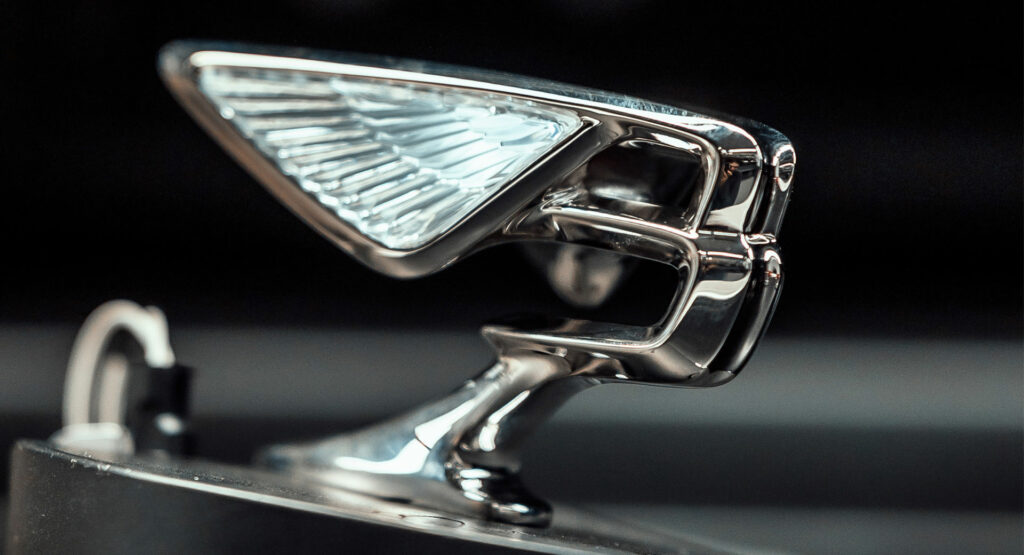
Hood ornaments are cool again and Bentley has revealed 97% of Flying Spur customers order the Flying B.
The Flying B dates back to the mid-1920’s and has gone through sixth iterations over the decades. The latest version debuted on the redesigned Flying Spur and is Bentley’s first to be electronically deployed, the first to feature a cover plate that replaces it when stowed, the first with clear acrylic wings, and the first to be internally illuminated.
That’s a lot of firsts and the latest version of the Flying B was created by Hoe Young Hwang. Of course, bringing it to life is easier said than done as the mascot is cast as a single piece of 316 grade stainless steel, which has molybdenum for added corrosion resistance.
Also: What’s The Coolest Hood Ornament And Should They Make A Comeback?
While that sounds simple enough, the Flying B is made using the investment or lost wax casting process, which is used for making “complex-shaped components that require tighter tolerances, thinner walls, and a better surface finish than can be obtained with sand casting.”
As Bentley explained, molten wax is injected into a die while a water-soluble core occupies the cavity where the two crystal wings will reside. On top of that, a ceramic central core creates a passageway within the wax molding for the illumination wiring. The wax emblem is then removed from the die and the soluble core dissolved to create a perfect Flying B in wax form.
From there, the “emblem is encased in multiple layers of a fine ceramic solution containing colloidal silica and alumina; once these layers have set solid, the wax is melted in a steam pressure chamber to leave a ceramic mold with a hollow cavity in the shape of the emblem.” Molten stainless steel is poured into the mold and then shot blasted to remove any traces of ceramic material when the emblem has cooled.
The Flying B is then hand polished and ready for assembly at WCM Europe Ltd, where the acrylic wings, wiring, and LEDs are installed. Bentley says the entire process takes 11 weeks, from start to finish, and the end result is a piece of “pure automotive theatre.”
















